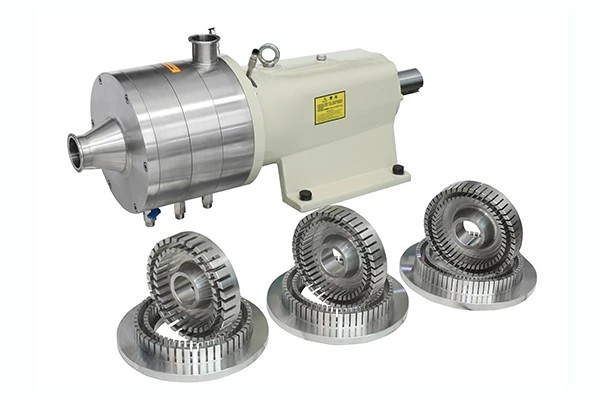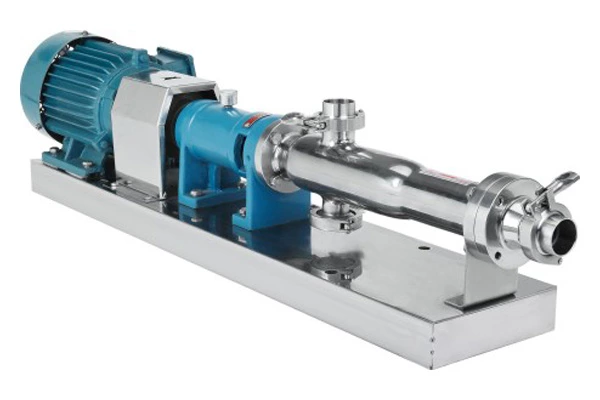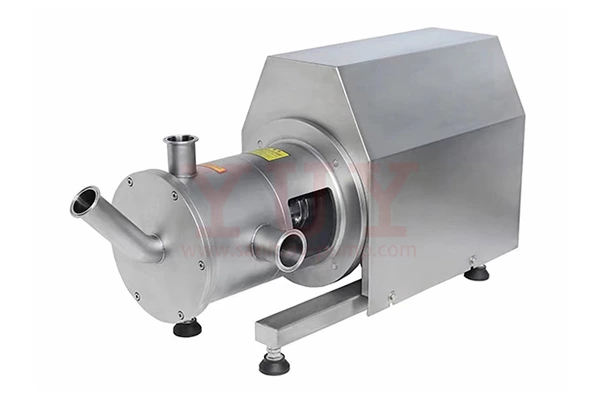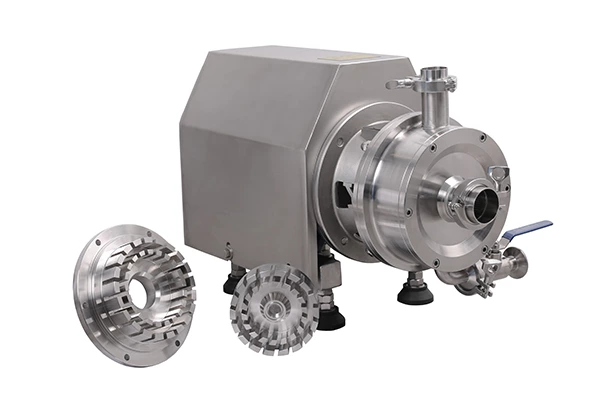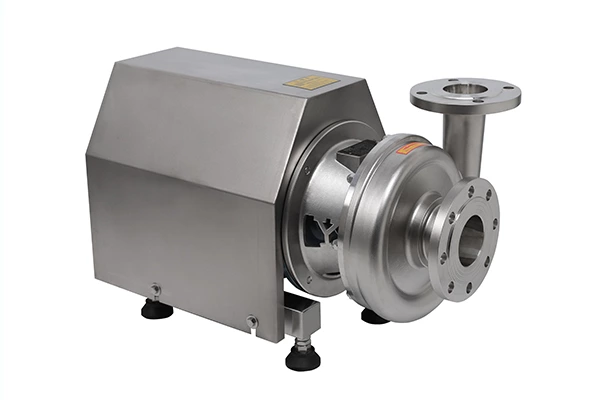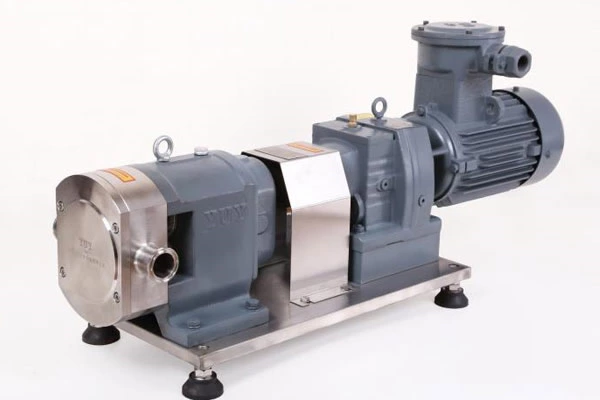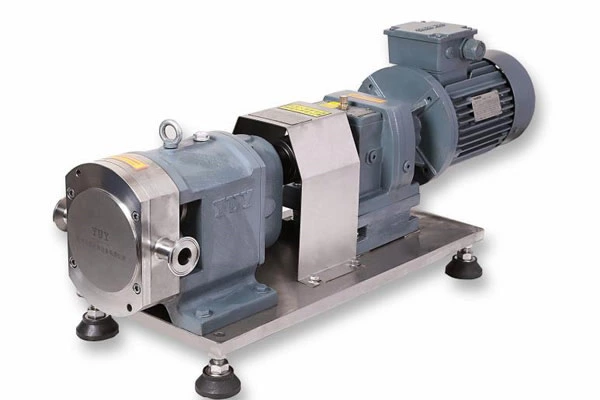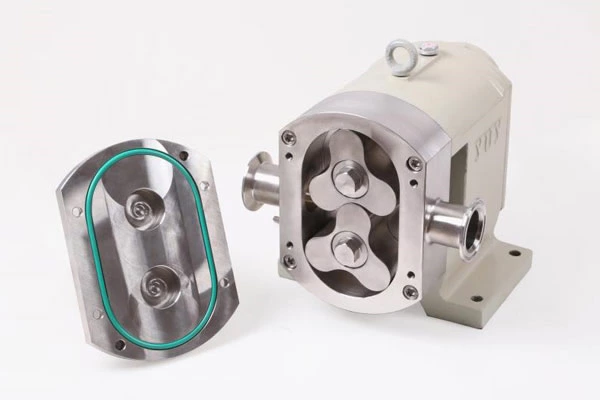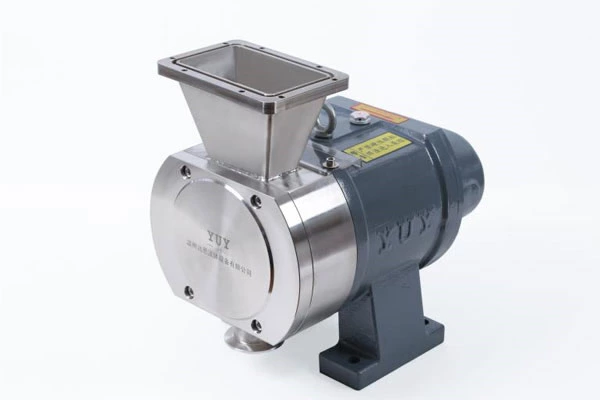Basic Selection Principles And Specific Operation Methods Of Emulsification Pumps
1. Understand the selection principles of Emulsification Pump
1. Make the type and performance of the selected pump meet the requirements of process parameters such as device flow, head, pressure, temperature, cavitation flow, suction head, etc.
2. Must meet the requirements of medium characteristics.
For pumps that transport flammable, explosive, toxic or precious media, the shaft seal is required to be reliable or a leak-free pump is used, such as emulsification pumps, gear pumps, marine gear pumps, and copper gear pumps.
For pumps that transport corrosive media, the convection parts are required to be made of corrosion-resistant materials, such as fluoroplastic corrosion-resistant pumps and CQF engineering plastic gear pumps.
For pumps that transport media containing solid particles, the convection parts are required to be made of wear-resistant materials, and the shaft seal is flushed with clean liquid when necessary.
3. High mechanical reliability, low noise, and low vibration.
4. Economically, the total cost of equipment fees, operating fees, maintenance fees, and management fees must be considered comprehensively to minimize.
5. Centrifugal pumps have the characteristics of high speed, small size, light weight, high efficiency, large flow, simple structure, no pulsation during infusion, stable performance, easy operation and convenient maintenance.
Therefore, except for the following situations, centrifugal pumps should be used as much as possible:
a. When there is a metering requirement, a metering pump should be used
b. When the head requirement is very high, the flow rate is very small and there is no suitable small flow and high head centrifugal pump available, a reciprocating pump can be used. If the cavitation requirement is not high, a vortex pump can also be used.
c. When the head is very low and the flow rate is very large, an axial flow pump and a mixed flow pump can be used.
d. When the medium viscosity is large (greater than 650~1000mm2/s), a rotor pump or a reciprocating pump (emulsifying pump, screw pump) can be considered.
e. When the gas content of the medium is 75%, the flow rate is small and the viscosity is less than 37.4mm2/s, a vortex pump can be used.
f. For occasions where starting is frequent or filling the pump is inconvenient, a pump with self-priming performance should be selected, such as a self-priming centrifugal pump, a self-priming vortex pump, and a pneumatic (electric) marine gear pump.
2. Know the basic basis for selecting an emulsified pump
The basis for selecting an emulsified pump should be considered from five aspects based on the process flow and water supply and drainage requirements, namely, liquid delivery volume, device head, liquid properties, pipeline layout, and operating conditions.
1. Flow rate is one of the important performance data for selecting a pump, which is directly related to the production capacity and delivery capacity of the entire device. For example, the normal, minimum, and maximum flow rates of the pump can be calculated in the process design of the design institute. When selecting a pump, the maximum flow rate is used as the basis, taking into account the normal flow rate. When there is no maximum flow rate, 1.1 times the normal flow rate can usually be taken as the maximum flow rate.
2. The head required by the device system is another important performance data for selecting a pump. Generally, the head after enlarging the margin by 5%-10% is used for selection.
3. Liquid properties, including the name of the liquid medium, physical properties, chemical properties and other properties. Physical properties include temperature c, density d, viscosity u, solid particle diameter and gas content in the medium, etc. This involves the system head, effective cavitation margin calculation and suitable pump type: chemical properties, mainly refer to the chemical corrosiveness and toxicity of the liquid medium, which is an important basis for selecting pump materials and which type of shaft seal to choose.
4. The pipeline layout conditions of the device system refer to the liquid delivery height, liquid delivery distance, liquid delivery direction, the lowest liquid level on the suction side, the highest liquid level on the discharge side and other data and pipeline specifications and their length, materials, pipe fittings specifications, quantity, etc., so as to calculate the system head and check the cavitation margin.
5. There are many operating conditions, such as the liquid operation T, saturated steam force P, suction side pressure PS (absolute), discharge side container pressure PZ, altitude, ambient temperature, whether the operation is intermittent or continuous, and whether the pump position is fixed or movable.
III. Specific operation of selecting emulsification pumps
According to the pump selection principles and basic selection conditions, the specific operations are as follows:
1. According to the layout of the device, terrain conditions, water level conditions, and operating conditions, determine the selection of horizontal, vertical and other types of pumps (pipeline, submerged, non-clogging, self-priming, gear, etc.).
2. According to the properties of the liquid medium, determine whether to use a clean water pump, hot water pump, oil pump, chemical pump, corrosion-resistant pump, or impurity pump, or a non-clogging pump.
Pumps installed in explosive areas should use corresponding explosion-proof motors according to the level of the explosive area.
3. According to the flow rate, determine whether to choose a single-suction pump or a double-suction pump; according to the head height, choose a single-stage pump or a multi-stage pump, a high-speed pump or a low-speed pump (air conditioning pump). The efficiency of a multi-stage pump is lower than that of a single-stage pump. If both single-stage and multi-stage pumps can be used, a single-stage pump should be selected first.
4. Determine the specific model of the emulsification pump
After determining which series of pumps to use, you can determine the specific model on the model spectrum or series characteristic curve according to the maximum flow rate (when there is no maximum flow rate, 1.1 times the normal flow rate can usually be taken as the maximum flow rate) and the head after amplifying 5%-10% of the margin. The operation is as follows:
Use the pump characteristic curve to find the required flow value on the horizontal axis and the required head value on the vertical axis. Draw a vertical line or horizontal line upward and to the right from the two values. If the intersection of the two lines falls exactly on the characteristic curve, then the pump is the pump to be selected. However, this ideal situation is generally rare. Usually, the following two situations will occur:
The first one: The intersection is above the characteristic curve, which means that the flow meets the requirements, but the head is not enough. At this time, if the head difference is not much, or the difference is about 5%, it can still be selected. If the head difference is large, choose a pump with a larger head. Or try to reduce the pipeline resistance loss.
The second one: The intersection is below the characteristic curve, within the fan-shaped trapezoidal range of the pump characteristic curve, and the model is preliminarily determined. Then, according to the difference in head, decide whether to cut the impeller diameter.
If the head difference is very small, do not cut. If the head difference is very large, cut the impeller diameter according to the required Q, H, and ns and cutting formula. If the intersection does not fall within the fan-shaped trapezoidal range, a pump with a smaller head should be selected. When selecting a pump, sometimes you need to consider the production process requirements and choose Q-H characteristic curves of different shapes.
5. After the pump model is determined, for water pumps or pumps whose physical and chemical media are similar to water, you need to go to the relevant product catalog or sample and calibrate according to the performance table or performance curve of the model to see if the normal working point falls in the priority working area of the pump? Is the effective NPSH greater than (NPSH). Can you also use NPSH to calibrate the geometric installation height?
6. For liquid pumps with a viscosity greater than 20mm2/s (or a density greater than 1000kg/m3), it is necessary to convert the water test pump characteristic curve into a performance curve of the viscosity (or density), especially to carefully calculate or compare the suction performance and input power.
7. Determine the number and standby rate of emulsification pumps:
For a pump that operates normally, generally only one pump is used, because a large pump is equivalent to two small pumps working in parallel (meaning the same head and flow rate), and the efficiency of a large pump is higher than that of a small pump. Therefore, from the perspective of energy saving, it is better to choose a large pump instead of two small pumps. However, in the following cases, two pumps can be considered to work in parallel:
The flow rate is very large, and one pump cannot reach this flow rate.
For large pumps that require a 50% standby rate, Botaibang can change two smaller pumps to work, and two standby (a total of three pumps) For some large pumps, pumps with a 70% flow rate requirement can be selected for parallel operation without a standby pump. When one pump is under maintenance, the other pump still bears 70% of the production delivery.
For pumps that need to operate continuously for 24 hours, three pumps should be kept as standby, one for operation, one for standby, and one for maintenance.
8. In general, customers can submit their basic conditions for selecting pumps, and our company will select or recommend better pump products. If the design institute has determined the pump model when designing the equipment, configure it according to the requirements of the design institute.
9. Determine the number of pumps and the standby rate:
For a pump in normal operation, generally only one pump is used, because a large pump is equivalent to two small pumps working in parallel (the head and flow are the same), and the efficiency of a large pump is higher than that of a small pump. Therefore, from the perspective of energy saving, it is better to choose a large pump instead of two small pumps. However, in the following cases, two pumps can be considered to work in parallel:
The flow rate is very large, and one emulsification pump cannot reach this flow rate.
For large pumps that require a 50% standby rate, two smaller pumps can be changed to work, and two standby pumps (a total of three pumps)
For some large pumps, a pump with a 70% flow requirement can be selected for parallel operation without a standby pump. When one pump is under maintenance, the other pump still bears 70% of the production delivery.
For pumps that need to operate continuously for 24 hours, three pumps should be kept as standby pumps, one for operation, one for standby, and one for maintenance.
